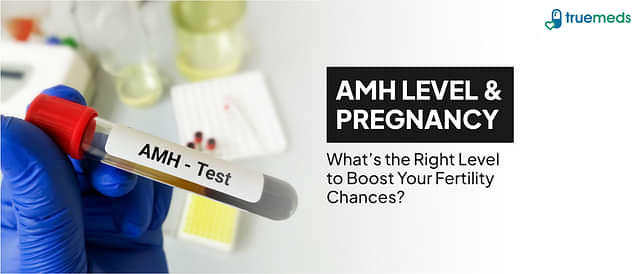What Causes Dimples and Why We Find Them Fascinating
Last updated on : 12 Nov, 2025
Read time : 7 min
Ever wondered why some smiles light up with adorable dimples? These tiny indentations, usually found on the cheeks or chin, aren’t just a cute quirk, they’re a result of unique muscle and bone structures that are often genetic.
In this blog, we explore the anatomical basis and science behind facial dimples, why they’re considered attractive, whether they can change with time, and the surgical options available to create or remove them.
How Are Cheek Dimples Formed?
Dimples that appear on the cheeks when we smile are formed due to variations in the structure of the zygomaticus major muscle. This muscle, which is crucial for facial expressions, runs typically from your cheekbone to the corner of your mouth. However, if you have dimples, its structure is different.
In individuals blessed with dimples, this muscle splits into two bundles, or it may have a bifid structure [1]. One bundle connects to the corner of your mouth as usual, while the other attaches below it and is attached to the skin above. This unique arrangement causes the skin to dip when this muscle contracts during a smile, giving rise to those adorable dimples.
You can have dimples on one or both cheeks. And yes, they are often inherited. According to Medline Plus, roughly 20–37% of the general population may have cheek dimples [2], but this figure can vary depending on where you live. Let’s now explore the different types of dimples that grace our faces.
Different Types of Dimples
There’s more to dimples than meets the eye. Here are three main types:
- Cheek Dimples: Undoubtedly, these are the most common type and form on your cheeks due to muscle variations (as described above). People often find them attractive, and they can make smiles more captivating!
- Chin Dimples (Cleft Chins): Also known as cleft chins, these dimples are caused by a gap in the underlying lower jawbone (mandible) that develops during embryonic growth, resulting in a noticeable indentation.
- Sacral Dimples: Located near your lower back, these dimples are small, shallow indentations typically found just above the buttocks crease. They are usually harmless and are present in most people. However, a deep, prominent, or atypical sacral dimple may need medical attention if it’s associated with other symptoms like a tuft of hair, skin tag, or discolouration, as this could indicate an underlying spinal issue [3].
While cheek dimples steal most of the limelight, chin and sacral dimples are seen less often.
Dimples have a unique place in various cultures, often associated with beauty, luck, or youthfulness. Their relative rarity (for cheek dimples) enhances their desirability, making them a sought-after trait in some societies. Whether on the cheek or chin, dimples are formed through unique muscle or bone structures and genetic factors, making them an intriguing feature that varies widely among individuals.
Are Dimples Genetic? The Science Behind the Trait
Dimples often leave many people intrigued by their appearance. Certain genetic factors contribute to their formation. In the past, it was widely held that dimples on the face were governed by a single dominant gene.
However, recent advancements in genetic studies suggest that this belief is far from accurate. According to research, dimples are currently not well-understood in terms of simple Mendelian inheritance. Instead, they are now often considered a polygenic trait, meaning multiple genes likely influence their presence and appearance. There is evidence suggesting they follow an autosomal dominant pattern in families but with “reduced penetrance,” which means not everyone who inherits the genes will express the trait [2]. This indicates that the genetics of dimples is not as straightforward as simple Mendelian inheritance would suggest, and they are often referred to as an “irregular dominant trait.” This means that even siblings may present different dimple patterns or lack them entirely.
Family studies further indicate that the inheritance of dimples frequently appears in successive generations within families. However, scientists are still striving to understand the exact mechanisms behind their inheritance.
Why Are Dimples Seen as Attractive?
Turning our attention towards societal perceptions, it’s no surprise that dimples are considered highly attractive by many. They are synonymous with youthfulness and a certain captivating charm, which can amplify facial expressions and add allure to an individual’s smile.
Perceptions around dimples vary considerably across cultures. In certain societies, they are admired as symbols of good luck or beauty, enhancing their desirability among people. Their rarity (for cheek dimples) adds to their appeal, rendering a person’s smile more distinctive and thereby making it more memorable.
Moreover, societal perceptions have often linked the presence of dimples with positive traits, adding a touch of allure to their bearers. So, whether you’re one of the lucky individuals with dimples or simply an admirer of these charming indentations, remember that every smile is special in its unique way.
Do Dimples Fade with Age or Weight Loss?
Now, you may wonder whether dimples can disappear over time. For some individuals, dimples may appear more prominent in their early years and fade as they age. This occurs when one loses skin laxity or undergoes significant weight loss with age. However, in most cases, this genetically inherited trait does not disappear completely.
On the other hand, weight gain may make the dimples appear more prominent due to the accumulation of excess facial fat. So, while your smile dimples may change over time, potentially become less visible or more pronounced based on various factors, they rarely vanish completely.
Key Takeaways
Whether you’re naturally blessed with dimples or considering cosmetic options to achieve them, this unique facial feature continues to capture attention and admiration worldwide. While they carry no health risks and are mostly genetic, understanding the science behind dimples can help us appreciate the intricate beauty of human anatomy. If you’re considering dimpleplasty, always consult a board-certified plastic surgeon and weigh the potential risks, such as infection, nerve damage, or asymmetry, against the benefits to make an informed decision.
Expert Quote
“Dimples are a fascinating example of how small anatomical variations, especially in facial muscles, can create features that are both genetically inherited and culturally admired.”
-Dr. Anubha Karol
Frequently Asked Questions (FAQs)
What causes face dimples?
Face dimples are caused by variations in facial muscles, often inherited genetically. When you smile, these differences create noticeable indentations or ‘dimples’ (specifically due to a split or bifid structure of the zygomaticus major muscle [1]).
Are dimples good or bad for you?
Dimples on the face have no health implications; they’re neither good nor bad for you. They’re simply a genetic trait that makes your smile unique.
Does a deficiency cause dimples?
No, dimples aren’t caused by any deficiency. They occur due to variations in the structure of facial muscles or jawbone development.
What are the benefits of dimples?
From an aesthetic perspective, dimples can enhance the appeal of a person’s smile, making it seem more charming or attractive to some people.
Is it lucky to have dimples?
In many cultures, having dimples is considered lucky or attractive, but this is subjective and varies from person to person.
References
[1] Lari, A., & Panse, N. (2012). Anatomical basis of dimple creation – A new technique: Our experience of 100 cases. Indian Journal of Plastic Surgery, 45(1), 89–93. https://doi.org/10.4103/0970-0358.96593
[2] MedlinePlus. (n.d.). Are facial dimples determined by genetics? U.S. National Library of Medicine. Retrieved October 30, 2025, from https://medlineplus.gov/genetics/understanding/traits/dimples/
[3] Mayo Clinic. (2024, May 18). Sacral dimple. Retrieved October 30, 2025, from https://www.mayoclinic.org/diseases-conditions/sacral-dimple/symptoms-causes/syc-20361099
[4] Almaary, H. F., Karthik, R., & Scott, C. (2018). New landmarks for the surgical creation of dimples based on facial form. Plastic and Reconstructive Surgery Global Open, 6(5), e1786. https://doi.org/10.1097/GOX.0000000000001786
[5] Omotoso, O., Adeniyi, P., & Medubi, L. (2010). Prevalence of facial dimples amongst South-western Nigerians: A case study of Ilorin, Kwara State of Nigeria. International Journal of Biomedical and Health Sciences, 6(4), 241–244. https://www.researchgate.net/publication/268258174_Prevalence_of_Facial_Dimples_amongst_South-western_Nigerians_A_case_study_of_Ilorin_Kwara_State_of_Nigeria
Disclaimer
Our healthcare experts have carefully reviewed and compiled the information presented here to ensure accuracy and trustworthiness. It is important to note that this information serves as a general overview of the topic and is for informational purposes only. It is not intended to diagnose, prevent, or cure any health problem. This page does not establish a doctor-patient relationship, nor does it replace the advice or consultation of a registered medical practitioner. We recommend seeking guidance from your registered medical practitioner for any questions or concerns regarding your medical condition.
Popular Articles
Recommended Articles
Recent Articles
Company
About UsHealth ArticleHealth StoriesHealth LibraryDiseases & Health ConditionsAyurvedaUnderstanding Generic MedicinesAll MedicinesAll BrandsNeed HelpFAQSecuritySubscribe
Registered Office Address
Grievance Officer
Download Truemeds
Contact Us
Our customer representative team is available 7 days a week from 9 am - 9 pm.
v4.10.0
2025 - Truemeds | All rights reserved. Our content is for informational purposes only. See additional information.
Our Payment Partners














































